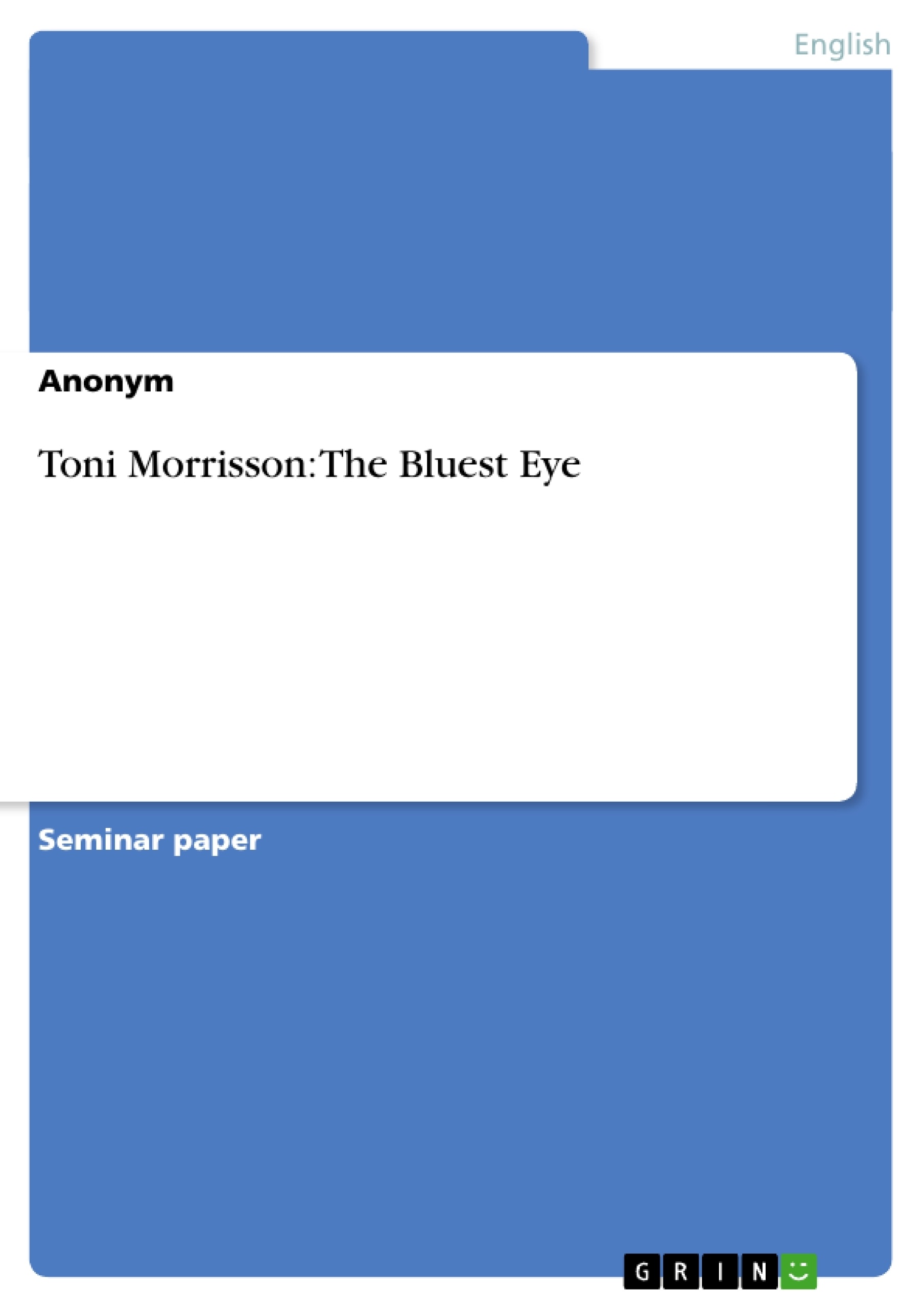

Nonetheless, in the ubiquitous Dick and Jane series there was never a nod, much less full inclusion, in a single paragraph about or illustration of any kind of family but the one described above. Yet in 1940, 12% of the US population was not white and the divorce rate was 22%.
How many pages is the bluest eye tv#
When TV came on the scene, families were all depicted in the same way - Father Knows Best, Ozzie and Harriet, Leave It to Beaver, The Donna Reed Show, etc., the only slight variations being the number and genders of children and inclusion or not of pets. They are a happy family! No cares, no troubles. They have toys and friends who play nicely with them. The books showed nothing other than the "typical" American family: financially secure, white (with blue eyes, no doubt), mother, father, sister, brother, dog, cat, all living in a lovely house they surely own. The books showed nothing other than the …more During that time period in the US, public schools used Dick and Jane readers to teach all 1st and 2nd graders.

Vickie During that time period in the US, public schools used Dick and Jane readers to teach all 1st and 2nd graders.

Innocence is another theme tied to the color blue.

The color can also be associated with intelligence, signifying Pecola's desperation to overcome her social situation to such an extent that she ignores logic and embraces the impossible instead, that she should magically be given blue eyes. I always thought it was also significant that blue is a color typically associated with depression and unhappiness, something Pecola is closely acquainted with. "The Bluest Eye", with its superlative of "blue", indicates her deep-rooted desire to change, to become the most different version of herself possible, since she hates her current self. She doesn't actually want the blue eyes for the sake of having blue eyes, she wants them for the positive treatment she sees people with blue eyes getting (rather than her brown ones), so, in a manner of speaking, it's herself that she wants to become blue. I always thought that it was "eye" instead of "eyes" because it is a homonym to "I", as in a person - in this case Pecola Breedlove. I always thought that it was "eye" instead of "eyes" because it is a …more Note: this answer isn't official in any way, just what I thought when reading it. The Bluest Eye remains one of Toni Morrisons's most powerful, unforgettable novels- and a significant work of American fiction.more What its vivid evocation of the fear and loneliness at the heart of a child's yearning, and the tragedy of its fulfillment. Pecola's life does change- in painful, devastating ways. In the autumn of 1941, the year the marigolds in the Breedloves' garden do not bloom. Pecola prays for her eyes to turn blue so that she will be as beautiful and beloved as all the blond, blue-eyed children in America. Set in the author's girlhood hometown of Lorain, Ohio, it tells the story of black, eleven-year-old Pecola Breedlove. In the a The Bluest Eye is Toni Morrison's first novel, a book heralded for its richness of language and boldness of vision. The Bluest Eye is Toni Morrison's first novel, a book heralded for its richness of language and boldness of vision.


 0 kommentar(er)
0 kommentar(er)
